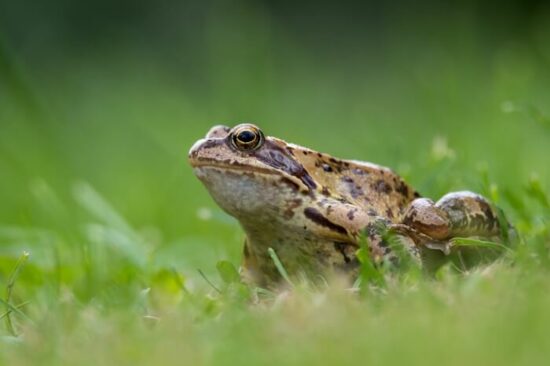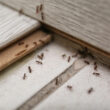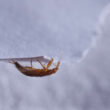Figuring out what eats cockroaches is more about identifying what animals won’t eat them, since so many critters will gladly munch on these insects if given a chance.
But certain groups of animals make up a larger portion of cockroach predators than others. This list goes over the main ones.
1. Insects
While lots of animals will occasionally make a meal of a roach, the main cockroach predator is actually other insects. Whether the roaches are in the wild or are inside your home, there’s another insect just waiting to gobble it up. From ants and silverfish to beetle larvae and praying mantises, cockroaches have plenty of natural predators in the insect world. Let’s take a quick look at some of the unique ways that these predatory insects help to keep the cockroach population in check.
Each insect has its own special way of catching and eating cockroaches. The insect that would probably win the prize for the most original way to eat a roach is the emerald cockroach wasp. This wasp uses a neurotoxin that it injects into the brain of the cockroach. This doesn’t kill the roach, it just puts it into a kind of stupor. The cockroach grooms itself while in this trance-like state, and then it goes into a deep sleep. Once the roach is asleep, the wasp chooses a strategic place on the roach’s body to lay its eggs. When the eggs hatch, the larvae will get their first meal from the still-paralyzed cockroach.
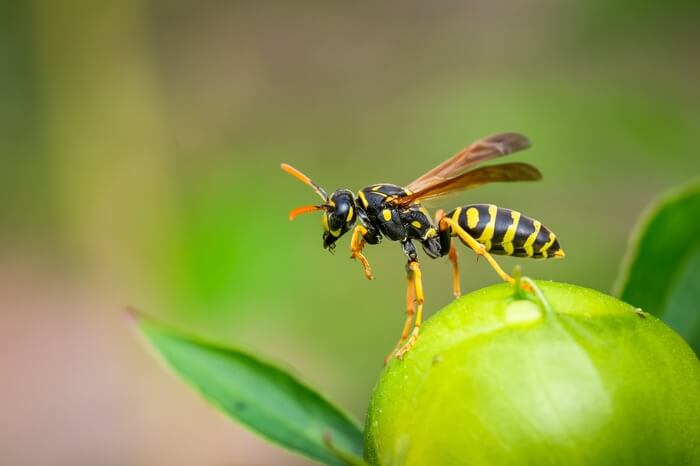
Pretty gruesome.
Another highly predatory insect that eats cockroaches is the praying mantis. This insect, a member of the superorder Dictyoptera, is actually in the same order as cockroaches.
Praying mantises are expert and lethal hunters and are known to mainly eat other arthropods. They will, however, also consume small vertebrates such as lizards, frogs and even small birds.
They are mainly ambush predators, so if a cockroach is walking in an exposed area, it is an easy meal for a praying mantis. We’d like to note here that praying mantises are great for keeping any roaches that are outside your home in check, but they will not help you deal with ones that are in your house.
The insects that will often eat the cockroaches that are in your home include critters like silverfish, beetle larvae and even other roaches. In general, cockroaches won’t eat each other unless the food supply is scarce.
2. Birds
It’s thought that there are between 9,000 and 10,000 species of birds around the world. They can be found in just about every habitat from the deepest tropical jungles to the frozen regions of the poles. Along with this diversity of habitat comes a very diverse diet. Birds, omnivorous by nature, have been known to consume seeds, nuts, berries, insects, fish and even small mammals.
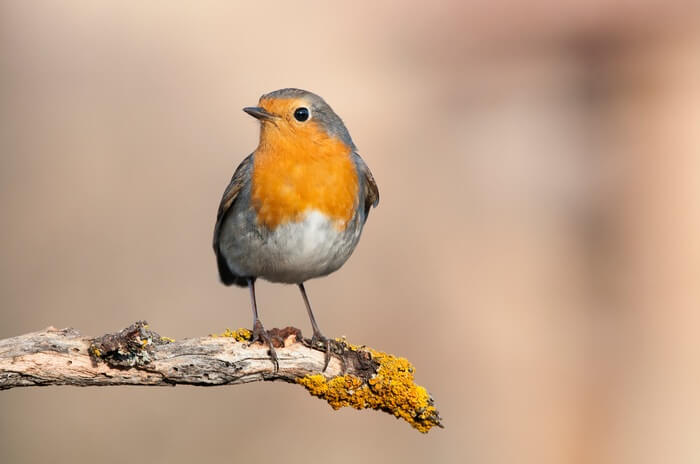
You’d think that with so many cockroaches in the world (some estimates say that there are thousands of them per square acre of woodland) many birds would eat cockroaches as a core source of food. Strangely enough, birds will definitely eat cockroaches, but they are by no means a popular item on the menu.
One of the reasons that birds don’t scarf down cockroaches all day is that they are not usually found in the places where birds hang out. Roaches love it where it’s dark and moist, and they prefer small, hidden spaces. Most birds would rather eat insects that are more out in the open and are easier to find and catch.
Some species that are known to eat cockroaches are jays, starlings, mynas, peafowl, orioles, parrots and pheasants.
Roaches that are found in your home should never be given to pet birds. This is not an appropriate method of roach control, and it might interfere with your pet’s recommended diet.
3. Arachnids
The list of what eats cockroaches wouldn’t be complete without arachnids. Arachnids, critters like spiders and scorpions, will also eat cockroaches. While roaches may not be a huge part of their diet, these arachnids will eat them if they are available.
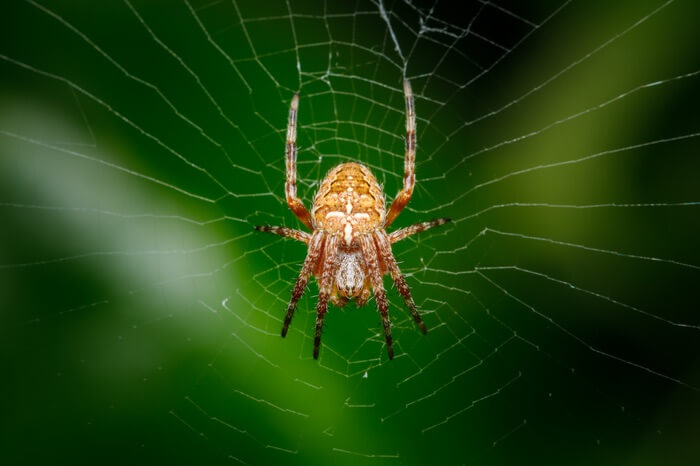
As far as spiders go, the types that eat roaches include American house spiders, wolf spiders, jumping spiders, brown recluse spiders and huntsmen. Some of these spiders will eat cockroaches found outside, and some of them go after the ones in your home.
Having spiders that eat roaches may sound like a helpful solution, but you don’t want to have spiders such as the brown recluse in your home either. The same goes for scorpions. Scorpions simply love cockroaches, but having them in your living space is dangerous (obviously).
In the case of arachnids attracted by cockroaches, it’s best to consult with a pest control specialist. Spiders are great in the garden, but they can pose a real problem if they are attracted into your home because of their role as a cockroach predator.
4. Mammals
In general, mammals are not big consumers of cockroaches. However, a couple of exceptions are opossums, hedgehogs, mice and rats.
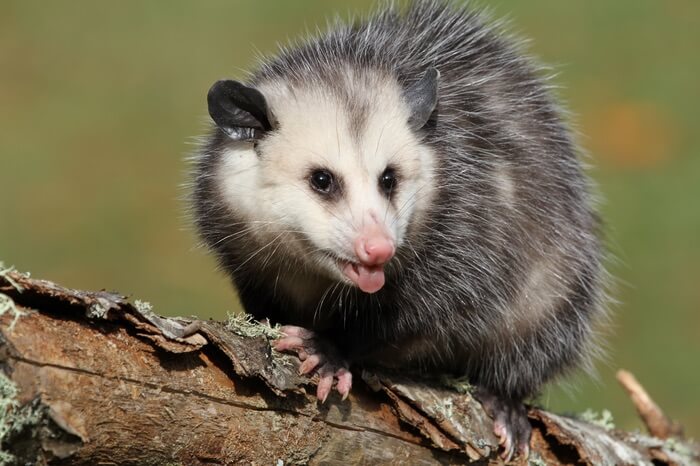
The opossum is an opportunistic eater and can be found in many backyards across the United States. This marsupial, the only one that is native to the United States, is considered by many to be the best pest control helper you can get. They will eat just about anything including garbage, mice, rats, snails, frogs, ticks and cockroaches. While many people may consider this mammal a pest (especially after it’s been through their trash) it is actually a pest-killing ally you’ll want to have in your yard.
Quick Tip: Besides being a natural cockroach predator and eating as many roaches as it can catch in your yard, an opossum can be an effective way to keep the tick population at bay.
As we mentioned above, mice, rats and even hedgehogs will sometimes eat cockroaches. In the case of mice and rats, you definitely don’t want these mammals around your home. They are considered to be pests themselves, and they often carry serious diseases.
If you have a cat, you may have seen it go after a stray roach in your home. This is more for the pleasure of the hunt and not for a food source. In fact, it’s best to not let your cat eat roaches as they carry diseases and may be laced with pesticides (but we understand that it’s tough to stop a cat from doing what it wants).
5. Frogs
When it comes to the list of what eats cockroaches, frogs stand out. Frogs are notorious eaters of cockroaches. In addition to roaches, frogs are also known to eat flies, moths, slugs, snails and even small mice.
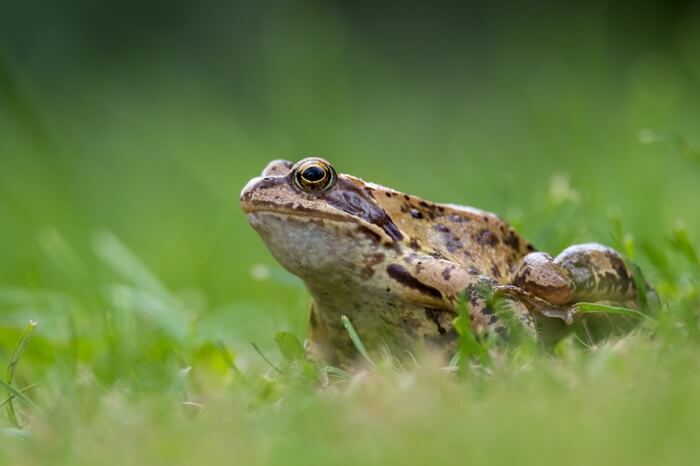
Because both frogs and cockroaches like to hang out where it’s moist and dark, it’s the perfect place for frogs to grab one of their favorite snacks.
Some people, in order to attract these efficient roach eaters to their yard, will even install a water feature on their property. The idea behind this is to create an environment that is favorable to both frogs and cockroaches.
6. Toads
Encouraging toads to make a home in your yard is another good and all-natural way to keep your outdoor cockroach population under control. Roaches that are eaten outside won’t make it into your home to get into your kitchen, bathrooms and other areas of your house.
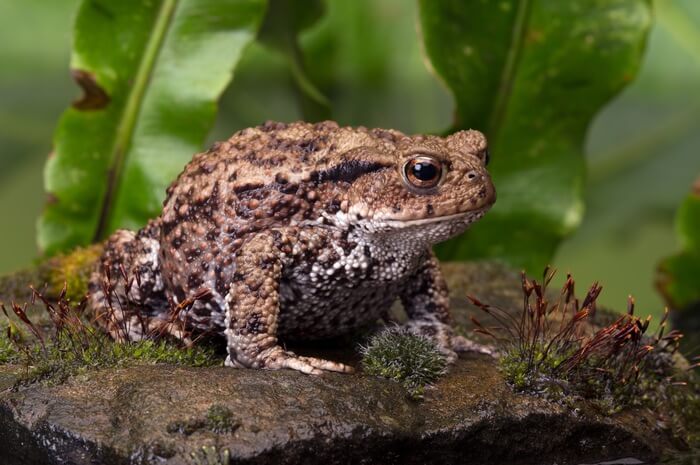
Different kinds of toads eat different kinds of prey. Most toads prefer to eat a variety of arthropods, spiders, slugs, snails and worms. Some, however, will even eat small rodents or birds.
Since toads like hiding out in dark places like under rocks, loose boards, leaf litter and under bushes, you can create some nice spots that will keep these roach predators in your yard. You can also put a toad-house in your garden. Doing this will help to keep the unwanted pests from eating your precious plants.
7. Reptiles
Many reptiles use cockroaches as a food source. Various types of lizards, turtles, snakes and even young alligators and crocodiles will eat cockroaches if they are available.
The Eastern box turtle is known to forage under rocks, rotten logs and leaves to find tasty things to eat. These types of damp and dark places are exactly where roaches like to hide, and turtles will eagerly gobble them up if they find them.
Believe it or not, some snakes will eat the occasional cockroach. There are not many species of snakes that will do so, but cottonmouths, brown snakes and the rough green snake will eat cockroaches that they find in leaf litter or under bushes and shrubs.
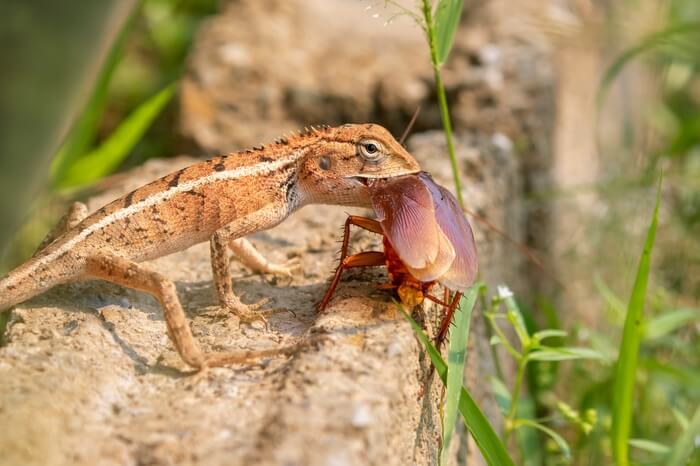
Young alligators and crocodiles will often eat cockroaches that they find scurrying along the edge of the pond or other waterways where they live. Cockroaches provide these young crocodilians with an easy to catch source of protein.
There are many kinds of lizards that eat cockroaches. Not all lizards are insectivores, but the ones that are will eat roaches if they are available. Leopard geckos, monitor lizards, basilisks and even various kinds of iguanas will eat roaches.
Cockroaches are a common treat for pet reptiles, and some people may think that catching roaches inside their house and feeding them to their pets is a good idea. This is not something that we recommend because roaches that you find in your home are disease carriers, and they may have been exposed to poisons inside or outside of the house.
If you’re not afraid of lizards, and you live in an area where there are small lizards in your yard, you can let one into your home. It will eat lots of household pests including roaches.
Conclusion
Now that you know what eats cockroaches, it’s time for you to use that information to your advantage. If you’re trying to keep roaches off of your property or away from your home, facilitating the presence of some of these natural predators can make a big difference.
Let us know what you think about this list and if you’ve had any luck with any of the cockroach predators on this list. It’s always fun to hear from our readers!
